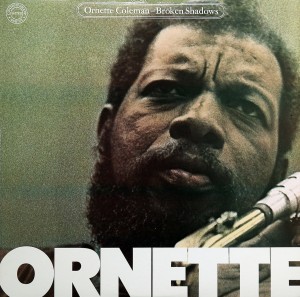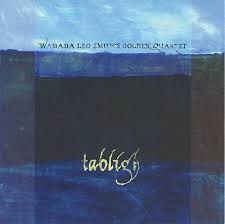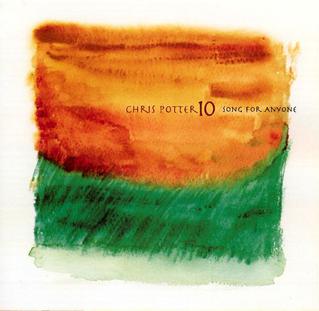The term "M-Base" is used in several ways. In the 1980s, a loose collective of young African-American musicians including Steve Coleman, Graham Haynes, Cassandra Wilson, Geri Allen, Robin Eubanks, and Greg Osby emerged in Brooklyn with a new sound and specific ideas about creative expression. Using a term coined by Steve Coleman, they called these ideas "M-Base-concept" and critics have used this term to categorize this scene’s music as a jazz style. But Coleman stressed "M-Base" doesn’t denote a musical style but a way of thinking about creating music. As famous musicians did in the past, he also refuses the word "jazz" as a label for his music and the music tradition represented by musicians like John Coltrane, Charlie Parker, Louis Armstrong, etc. However, the musicians of the M-Base movement, which also included dancers and poets, strived for common creative musical languages, so their early recordings show a lot of similarities reflecting their common ideas, the experiences of working together, and their similar cultural background. To label this kind of music, jazz critics have established the word "M-Base" as a jazz style for lack of a better term, distorting its original meaning.

Hi Voltage is an album by jazz saxophonist Hank Mobley recorded on October 9, 1967 and released on the Blue Note label. It features performances by Mobley with Jackie McLean, Blue Mitchell, John Hicks, Billy Higgins and Bob Cranshaw.

A Chip Off the Old Block is an album by American jazz saxophonist Stanley Turrentine. The album features tunes associated with bandleader Count Basie, and was released by Blue Note. Music was performed by Turrentine with organist Shirley Scott, trumpeter Blue Mitchell, bassist Earl May, and drummer Al Harewood.

A Bluish Bag is an album by jazz saxophonist Stanley Turrentine consisting of two sessions recorded for the Blue Note label in 1967 and arranged by Duke Pearson, the first featuring Donald Byrd and the second McCoy Tyner, among others.

Sittin' In is a 1957 studio album by Dizzy Gillespie, featuring the saxophonists Stan Getz, Paul Gonsalves and Coleman Hawkins.

Jackie's Bag is an album by American saxophonist Jackie McLean recorded in 1959 and 1960 and released by Blue Note.

Ornette at 12 is an album by the American jazz saxophonist and composer Ornette Coleman released on the Impulse! label in 1969.

Ornette on Tenor is the eighth album by the American jazz composer and saxophonist Ornette Coleman, released in 1962 on Atlantic Records, his sixth and final one for the label. It features Coleman playing tenor saxophone rather than his usual alto, and bassist Jimmy Garrison before he joined the John Coltrane Quartet. This would be the last record by the Coleman Quartet started in the 1950s; he would disband this group and form the Coleman Trio later in the year. Recording sessions took place on March 22 and 27, 1961, at Atlantic Studios in New York City. One outtake from the March 27 session, "Harlem's Manhattan," would appear on the 1970 compilation The Art of the Improvisers.

Science Fiction is an album by the American jazz saxophonist and composer Ornette Coleman recorded in 1971 and released on the Columbia label.

Broken Shadows is an album by the American jazz saxophonist and composer Ornette Coleman recorded in 1971, at the same sessions that produced Science Fiction, but not released on the Columbia label until 1982.

Little Man Big Band is a Grammy-nominated album by saxophonist Jimmy Heath featuring performances recorded in 1992 and released on the Verve label.

Rhythm in Mind is an album by saxophonist Steve Coleman that was recorded in 1991 and released by Novus Records.

Meditation is an album of duets by the American saxophonist George Coleman and Spanish pianist Tete Montoliu recorded in early 1977 and released on the Dutch label, Timeless.

Captain Buckles is an album by saxophonist David "Fathead" Newman featuring performances recorded in 1970 and released on the Cotillion label.

Tabligh is an album by American jazz trumpeter Wadada Leo Smith which was recorded live at the CalArts Creative Music Festival in 2005 and released on Cuneiform. It was the third recording by his Golden Quartet with a new electro-acoustic lineup featuring pianist Vijay Iyer, bassist John Lindberg and drummer Ronald Shannon Jackson.

Functional Arrhythmias is an album by American jazz saxophonist Steve Coleman and his band Five Elements, which was recorded in 2012 and released on Pi Recordings. This version of the ensemble is notable for the return of Anthony Tidd on electric bass and Sean Rickman on drums, both of whom first played with the band more than 15 years earlier. The rest of the band consists of trumpeter Jonathan Finlayson and guitarist Miles Okazaki.

Three Compositions is an album by American jazz saxophonist Roscoe Mitchell which was recorded live at the occasion of Sant'Anna Arresi Jazz Festival 2009 and released on the French RogueArt label. Mitchell's scores are played by flautist Nicole Mitchell's Black Earth Ensemble.

Song for Anyone is an album by jazz saxophonist Chris Potter released on the Sunnyside label in 2007.






















